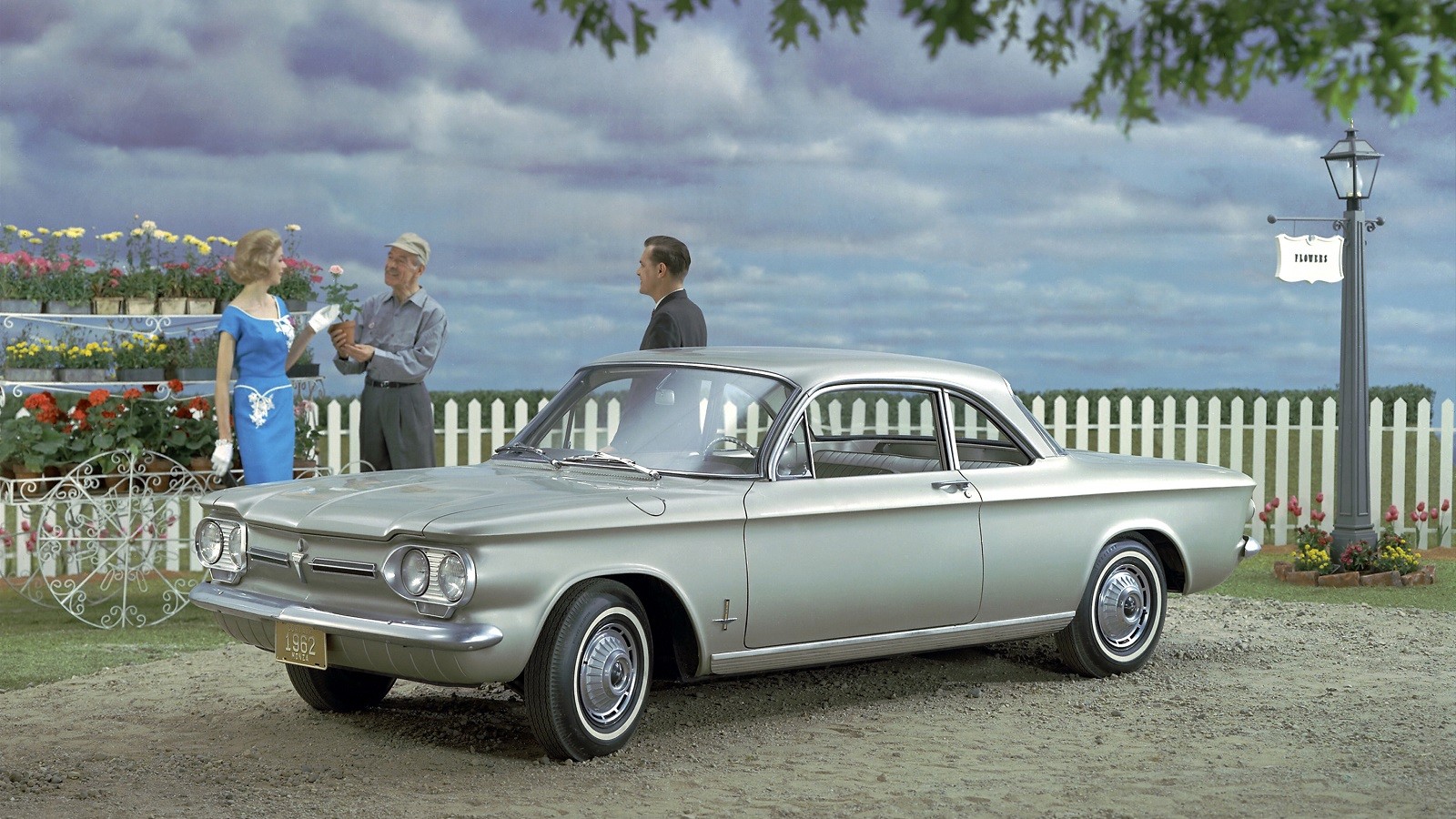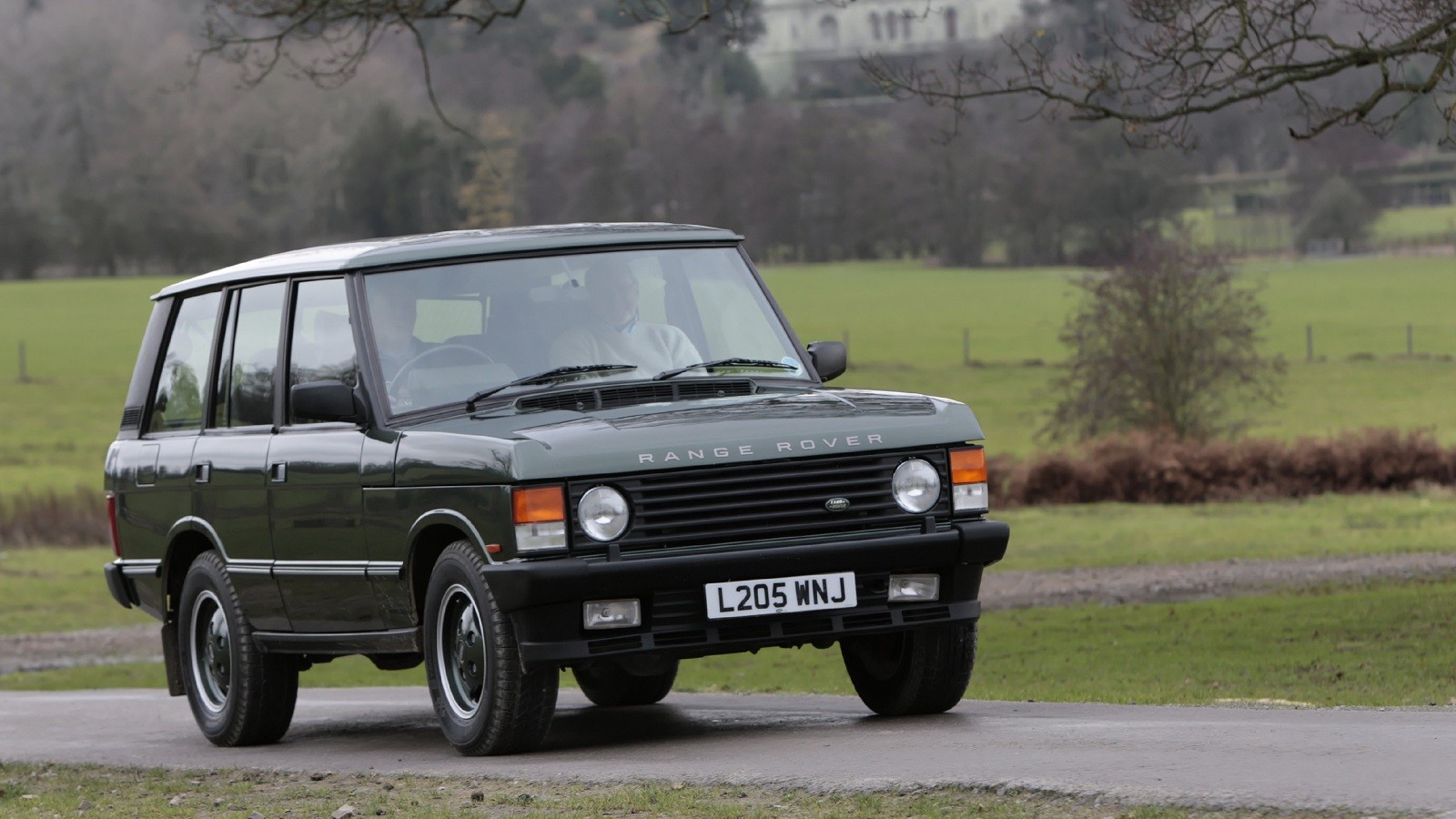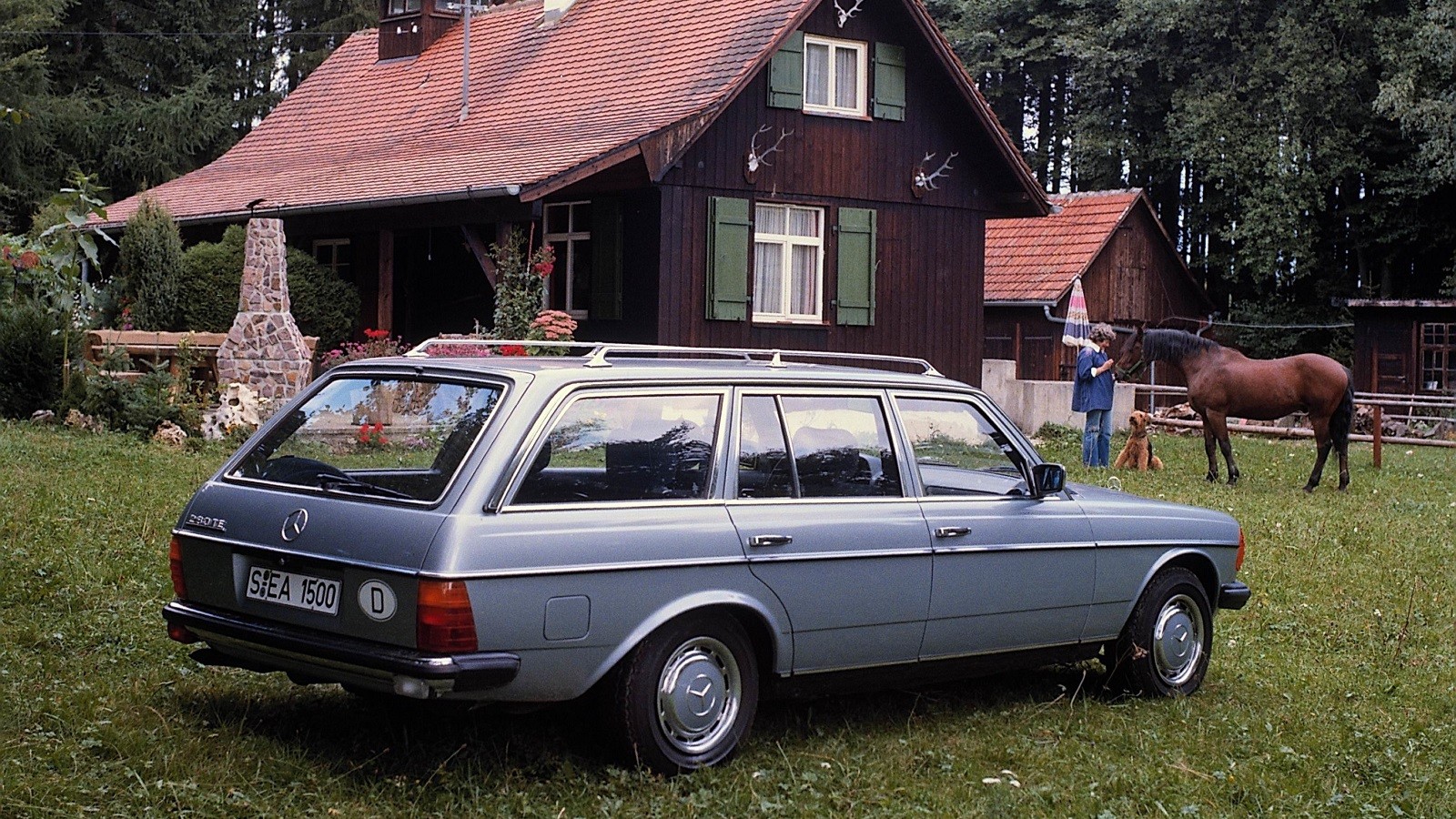-
 © Triumph
© Triumph -
 © Citroën
© Citroën -
 © Citroën
© Citroën -
 © Renault
© Renault -
 © Renault
© Renault -
 © Chevrolet
© Chevrolet -
 © Chevrolet
© Chevrolet -
 © NSU
© NSU -
 © NSU
© NSU -
 © Jaguar Land Rover
© Jaguar Land Rover -
 © Jaguar Land Rover
© Jaguar Land Rover -
 © AMC
© AMC -
 © AMC
© AMC -
 © Triumph
© Triumph -
 © Triumph
© Triumph -
 © Alfa Romeo
© Alfa Romeo -
 © Alfa Romeo
© Alfa Romeo -
 © Lada
© Lada -
 © Lada
© Lada -
 © Porsche
© Porsche -
 © Porsche
© Porsche -
 © Mercedes-Benz
© Mercedes-Benz -
 © Mercedes-Benz
© Mercedes-Benz
-
Hero or zero?
The multifaceted world of classic cars spins around the theme of heroes and villains.
There are cars enthusiasts unanimously love regardless of their faults. And, there are models collectors concertedly despise even if it means overlooking their qualities.
Once a car is pegged on the ‘villain’ side of the scale, it’s hard for it to make a comeback and it normally stays there even as the number of units left on the road dwindles. Looking at Renault 14 values confirms rarity doesn’t guarantee desirability.
Join us for a look at some of the classic cars dogged by an undeserved reputation for overwhelming complexity, intimidating reliability problems, or incurable boringness.
-
1. 1955 Citroën DS
Citroën’s stately DS was a shambolic mess in the months that followed its 1955 introduction.
It was just as futuristic as it was problematic and the French firm spent months fixing the impressive selection of problems that plagued early cars. Quality quickly improved and the DS was mostly sorted by the 1960s.
-
1955 Citroën DS (cont.)
65 years on, it’s a simple yet sophisticated car that collectors shouldn’t be afraid of.
Its hydropneumatic suspension makes it a little bit more complicated than other cars built in that era, but it’s straight forward (and fascinating) to navigate once you figure out which part does what.
Changing a sphere is a quick, easy operation that requires no special tools and that’s within the reach of the average classic car DiYer.
-
2. 1956 Renault Dauphine
For years, the Renault Dauphine has been a cornerstone of stories highlighting the worst cars made in the 20th century. It certainly wasn’t flawless, but it doesn’t deserve such a heinous reputation.
It wasn’t quick, yet it wasn’t markedly slower than other rear-engined economy cars made during that era, like the Fiat 600. And, rust didn’t overlook it, but even a Mercedes-Benz SL suffered from the tin worm.
-
1956 Renault Dauphine (cont.)
Interestingly, even in 2020 the Dauphine remains passionately loathed by collectors in the United States, where its biggest problem was that it wasn’t happy driving flat-out across a country the size of a continent.
This was also true for the original Mini, and for any of the small European cars optimistically imported to America at the time. Unless you’re planning to commute from Wichita to Reno every week, the Dauphine is an enjoyable, budget-friendly classic that’s dependable once it’s been sorted.
-
3. 1959 Chevrolet Corvair
Safety activist Ralph Nader damned the Chevrolet Corvair when he labelled it unsafe at any speed in his 1965 book.
It remains one of the most controversial American cars ever released due largely to its swing-axle rear suspension design.
One fact that often gets overlooked is that this system was only fitted to the first-generation model (pictured) built between the 1960 and 1964 model years. And, it’s worth pointing out swing axles weren’t rare; Volkswagen’s Beetle and Porsche’s 356 used them, too.
-
1959 Chevrolet Corvair (cont.)
Chevrolet replaced the contentious swing-axle with an independent rear suspension when it launched the second-generation Corvair (pictured) for 1964.
Nearly everyone agreed the new set-up represented a considerable improvement that endowed the model with surprisingly sharp handling. Its reputation was irreparably damaged so it retired without a direct successor after the 1969 model year.
-
4. 1967 NSU Ro80
We could credibly argue the NSU Ro80 was the Tesla Model S of its time. It arrived in 1967 as a forward-thinking saloon with a revolutionary, twin-rotor Wankel engine and a semi-automatic transmission.
It was crowned European Car of the Year in 1968 by a significant margin, beating the Fiat 125 and the Simca 1100.
Motorists who purchased a Ro80 early in the production run quickly called NSU to report catastrophic engine failures, and an internal investigation blamed the issues on the apex seals.
-
1967 NSU Ro80 (cont.)
Owners also complained about fouled spark plugs and out-of-sync carburettors. NSU analysed the complaints and fixed most of the Ro80’s problems, but motorists continued to hold an unwavering grudge against it.
Ro80 production slowly continued until 1977 and later cars were much more usable in a wider variety of driving conditions, ranging from busy city traffic to back roads.
By that point, however, NSU had fallen under the Volkswagen umbrella and it was in the process of being phased out.
-
5. 1970 Range Rover
Land Rover’s original Range Rover unfairly suffers from the ‘British cars are capricious’ adage. They’re not perfect, they have a proven tendency to rust and leak oil, but they’re generally robust and simple to fix.
And, several of the issues that older Range Rovers develop over time are traceable to owner neglect.
-
1970 Range Rover (cont.)
Keep in mind even the newest examples are nearly a quarter of a century old, and we’re talking about a 4x4 developed to excel in unspeakably harsh conditions. 25-plus years of exploring the wilderness takes a toll.
The key to bagging a classic Range Rover that will allow you to spend more time driving than wrenching is to find one that has been used regularly but not abused. Unusual signs of wear, like dents in the underbody and sketchy repairs, are signs you should walk away unless you want a project.
-
6. 1975 AMC Pacer
Short, wide, and bulbous, the AMC Pacer is often dismissed as a car built on a premise that was interesting but wrong.
Its proportions were unusual, though they stemmed from an innovative attempt at creating a new type of compact car, and its passenger-side door was longer than the driver-side door to facilitate the task of entering and exiting the rear seats. AMC even offered an estate variant.
There was nothing else like it on the American market at the time, so why is it still snubbed by collectors?
-
1975 AMC Pacer (cont.)
The Pacer is not a bad car; its main problem is its image. It remains an offbeat, obscure car built by a company that entered the pantheon of automotive history in 1987.
Our advice is not to fear the Pacer. If you can stomach its design, you’ll enjoy a seldom-seen classic at a reasonable price.
-
7. 1975 Triumph TR7
Dubiously advertised as ‘the shape of things to come’, the TR7 was widely celebrated as the car that could save Triumph when it made its debut in 1975.
It was initially only offered as a coupé because executives feared the American government would ban convertibles, and a 2.0-litre four-cylinder engine replaced the straight-six Triumph owners knew and loved from the TR6.
Issues related to build quality hurt the car’s reputation early in the production run, and the criticism was initially well deserved.
-
1975 Triumph TR7 (cont.)
Early TR7s were indeed plagued with a long list of problems, but Triumph fixed a lot of them over time and it had largely figured out how to build the car by the end of the 1970s.
It added a convertible to the range in 1979 but it was too little, too late to fix the model’s trashed reputation. Many collectors don’t realise that and refuse to consider a TR7 so prices haven’t left the stratosphere – yet.
-
8. 1979 Alfa Romeo GTV6
Most collectors assume that Alfa Romeo and reliability problems go together like tea and biscuits.
Its older cars were often finicky when they were new and they haven’t got better with time, but they’re more solid than many believe, especially if they’ve received regular maintenance.
Introduced in 1979, the GTV6 was better rust-proofed than the Alfetta it was based on, and its V6 was rather solid.
-
1979 Alfa Romeo GTV6 (cont.)
One of the GTV6’s most common problems is a frighteningly fragile oil-fed timing belt tensioner, but an upgraded aftermarket mechanical unit is available and has been tested by hundreds of Alfisti around the world.
Driveline vibrations aren’t unheard of, the driveshaft spins at the same speed as the engine because the GTV6 uses a transaxle, but the flex joints are reasonably affordable and relatively easy to change. One of the bigger issues to look out for when shopping is a worn second-gear synchro.
-
9. 1979 Lada Riva
Introduced in 1979, the Lada Riva inspired so much dislike among motorists (and, later, collectors) that it’s still regularly made fun of in 2020. “How do you double the value of a Lada? Fill it up with petrol!”
Admittedly, it wasn’t a model of astonishing build quality, but it was a lot more solid than its reputation would have you believe. It’s an evolution of the 2101, which was a Fiat 124 beefed up for Russian roads.
-
1979 Lada Riva (cont.)
Some bits and pieces will break, inevitably, but Lada built the Riva for so long that parts are readily available. And, because it’s based on a 1960s design, it’s not exceptionally difficult to work on.
Some will contend there’s absolutely nothing desirable about an old Lada, and they’re entitled to their opinion, but it’s just as easy to argue the saloon and estate variants of the Riva are appealing starter classics.
-
10. 1997 Porsche 911
Porsche gave purists something to chew on when it introduced the 996-generation 911 in 1997. Although it was still unmistakably shaped like a 911, it lost its predecessor’s round headlights and ditched the air-cooled flat-six in favour of a new, water-cooled engine.
Enthusiasts relentlessly argued the attempts to modernise this decades-old nameplate needed to be checked rather than cultivated, and the 996 became the black sheep of the 911 family. It still suffers from this image in 2020.
-
1997 Porsche 911 (cont.)
Here’s what naysayers snobbishly overlook: it’s still a 911, and it drives like one. It wasn’t a trouble-free car, and the alarming IMS bearing issue is well known – but so is its fix.
Our advice is to tune out the ‘not-a-real-911’ chatter and buy the best 996 you can afford while prices remain low. Collectors will sooner or later realise the 996 is tragically overlooked and consequently undervalued.
-
11. 1976 Mercedes-Benz W123
Number 11 in a top 10? Yes! Because we’re finishing with a curveball – a car that’s not always as good as everyone claims.
Built from 1975 to 1986, the W123 enjoys a well-earned reputation for tank-like toughness. This honour is also its Achilles’ heel.
Many examples have been driven into the ground by a succession of merciless owners with only a vague notion of regular maintenance. Yes, it’s far more robust than average, but it’s still a pile of moving parts that need to be looked after on a regular basis.
-
1976 Mercedes-Benz W123 (cont.)
When shopping for a 123-series Mercedes, keep an eye out for rust on the body and on the floors (the door seals let water in as they age), low oil pressure, a broken odometer, and general neglect.
If the car looks like it’s on its last leg, it probably is, and parts are readily available but they’re rarely cheap. And, remember that sketchy, home-brewed vegetable-oil conversions can cause eye-wateringly expensive damage.
